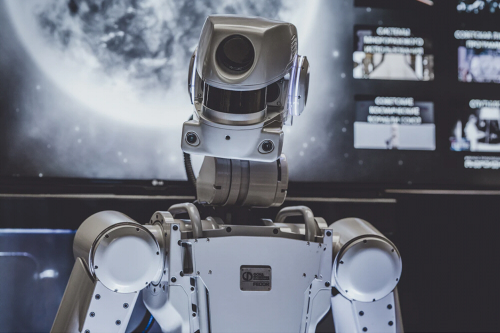Japanese Research Team Developing Robotic ‘Tail’ to Help Elderly People Stay Upright
Scott McDonald
A research team in Japan has worked to develop an artificial, robotic tail that could eventually help elderly people keep their balance, as well as remain upright.
Students and researchers at Keio University have built a devive called Arque. About 1 meter in length, it closely follows the movements of an animal’s tail, according to a Reuters report.
Junichi Nabeshima is a researcher and graduate student at the school’s Embodied Media Project. He attached the robotic tail to his waist with a harness while describing how it works.
“The tail keeps balance like a pendulum,” Nabeshima said. “When a human tilts their body one way, the tail moves in the opposite direction.”
Japan is one of the leaders in the industrial world when it comes to lifespan. As its population grows older, scientists and researchers seek new ways to keep them alive – and upright. New technology developed by its bright, young minds seems to be the answer.

Here’s how it works. The tail uses compressed air to move four artificial muscles in eight different directions. The tail is still at the prototype stage, and researchers are trying to find other ways and methods to make the tail more flexible.
In addition to the benefits that an artificial tail could provide to the elderly – or younger people who may have some mobility issues or problems with their balance – the researchers are also studying ways their device can help the working population. For example, they are looking at ways it can help stabilize warehouse and factory workers who are prone to heavy lifting and carrying.
“I think it would be nice to incorporate this further developed prosthetic tail into daily life, when one seeks a little more help balancing,” Nabeshima said.
There was no report that indicates if the tail wags when the wearer is happy to see their grandchildren.
A robotic tail would be far from the first mechanical devices developed for the human body. Scientists have created robotic arms and hands that use muscle memory to delicately pick up objects.
Mechanical legs have been developed to help people rehabilitate after losing a lower limb. These have become even more sophisticated over the last 30 years as U.S. service members come back from war zones and the loss of either one or two legs.








